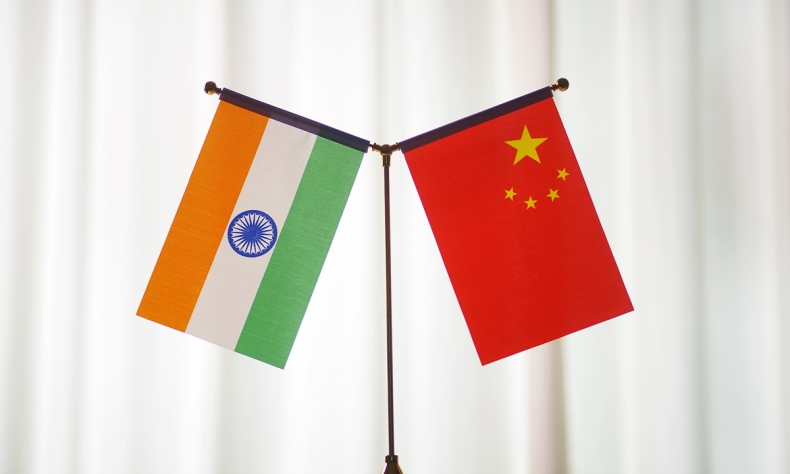Why China-India Relations Matter

The complementariness that is there among China, India, and Russia is unbelievable and tantalising. Together, the three have the potential of changing all conventional notions of geopolitics and economic development.
It is not easy to talk about peace when two protagonists confront each other. It is dangerous to try to broker peace when armies are ranged face to face on either side of a hypothetical dividing line, charged by high levels of adrenalin, raring to lunge at each other. It is more like what T.S. Eliot described in his play The Family Reunion through the words of Aunt Agatha: “In a world of fugitives, the person taking the opposite direction will appear to run away.”
But one must try. Despite running the risk of being misunderstood, here is an analysis of why China and India could mean a lot for each other. This is on account of at least five reasons – though there may be many more.
- The weight of history
- The tremendous interdependence potential
- The need to stay neutral and non-partisan
- To compete, yet not be bitter about it
- The need to backtrack from hostile positions adopted
Each of the above is an issue that can be discussed for hours, but in the interests of brevity and time, they will be dealt with as concisely as possible.
The weight of history
In many ways, China and India have a history of interaction that goes back more than 2,500 years, if not more. Both are great ancient civilizations. And both aspire to greater heights of learning and sagacity.
Even when it comes to business, China and India have commanded global economics for almost 1,500 of the 2,500 years leading to present times. This was clearly documented by the late economist Angus Maddison. Both countries began to feel the ground slip under their feet as the industrial revolution coupled with the printing press gave a momentum to Western countries that neither China nor India could match. The invention of the steam engine made trains and ships move faster. The printing press allowed mass printing of maps, including sea routes, which led first to the age of exploration and then, sadly, to colonisation.
Colonisation did terrible things to the subjugated countries. First, it took away the land and territory. It then plundered wealth. More agonizingly, colonisation took away any semblance of dignity that the indigenous occupants of the captured territories might have had. That took away their ability to rise again. However, much to the credit of both China and India, both have rediscovered their ancient vim, and as if marching to an old DNA script, both have begun to reassert themselves on the global scene.
In many ways, China was the undisputed master of the seas to its east. Even Indian merchants who used to sail to China for silk till almost 1800, in exchange for spices, ivory and sandalwood, used to acknowledge the looming presence of the Chinese Navy and paid tribute to China’s emperors for over 1,500 years. Interestingly, however, China did not venture beyond the Straits of Malacca. Nor did the Indian merchants who traded with China traverse the seas to the western part of this territory known as India. They merely passed on the goods they had brought back to their counterparts plying the western shores of this sub-continent.
The new world, however, has blurred all these lines for everyone, and that is one of the key causes for heartburn for almost all global powers. The rapid emergence of China and India on the world stage has changed the situation of the entire global arena.

Tremendous potential for interdependence
You may call it Dharma, the cycle of life, or mere coincidence. Many of the nations that grew through colonisation – spurred on by other nations’ money – are now in a financial mess. This includes the U.S. which practiced a reverse colonisation through the slave empires it created.
It is only lately that both countries – along with Russia – have begun to recognise the tremendous potential for interdependence. And, all the three players know that if these interdependencies were to be given full rein, all the three would prosper immensely.
But fear, chauvinism, and a bit of distrust have together caused the three economies to remain limited in their vision and stunted in their pace of growth.
China is three times the size of India, and almost the same size as the U.S. But unlike the U.S., China has very little water. That is one reason why China has not been able to grow much into its hinterland regions. It has grown where there is water, in the eastern parts. The fact that the ocean also was there to aid transportation and commerce was an added advantage.
Russia is three times the size of China and has the largest reserves of freshwater in the world. A couple of years ago, Russia and China signed a pact, allowing the latter to draw water through a canal from Lake Baikal. This water will reach central China. China has moved adroitly, steering clear of more friction, and seeking a commercial solution to its economic and social needs.
Where there is water there is life, goes an old saying. It is expected that China’s second wave of industrialisation will come from its central regions, as populations, enterprises and large corporations grow there. They may cater more to the domestic market. China’s story of economic development is still not over. Expect a lot more.
Neighbouring Russia has thus become a supplier of oil, gas and water to China. Russia has the world’s largest reserves of minerals, including gold and rare earths. It will seek out India, precisely because it is not a next-door neighbour. Indian experts are already working with Russia on oil and in medicare and will be exploiting coal in eastern Russia and building railways and ports there for that purpose.
And India is a large market for Russian arms and technologies (two Indian companies are now sourcing the COVID-19 vaccine from there). China too wants access to this large market. India needs China’s capital. China needs India’s English-speaking intermediaries and market developers. Both could bring bilateral trade to levels that surpass U.S.-Canada trade, the largest in the world.
The complementariness that is there among the three nations is unbelievable and tantalising. Together, the three have the potential of changing all conventional notions of geopolitics and economic development. But for this, they need to work on building more trust among themselves.
The author is consulting editor with Free Press Journal.
 Facebook
Facebook
 Twitter
Twitter
 Linkedin
Linkedin
 Google +
Google +










